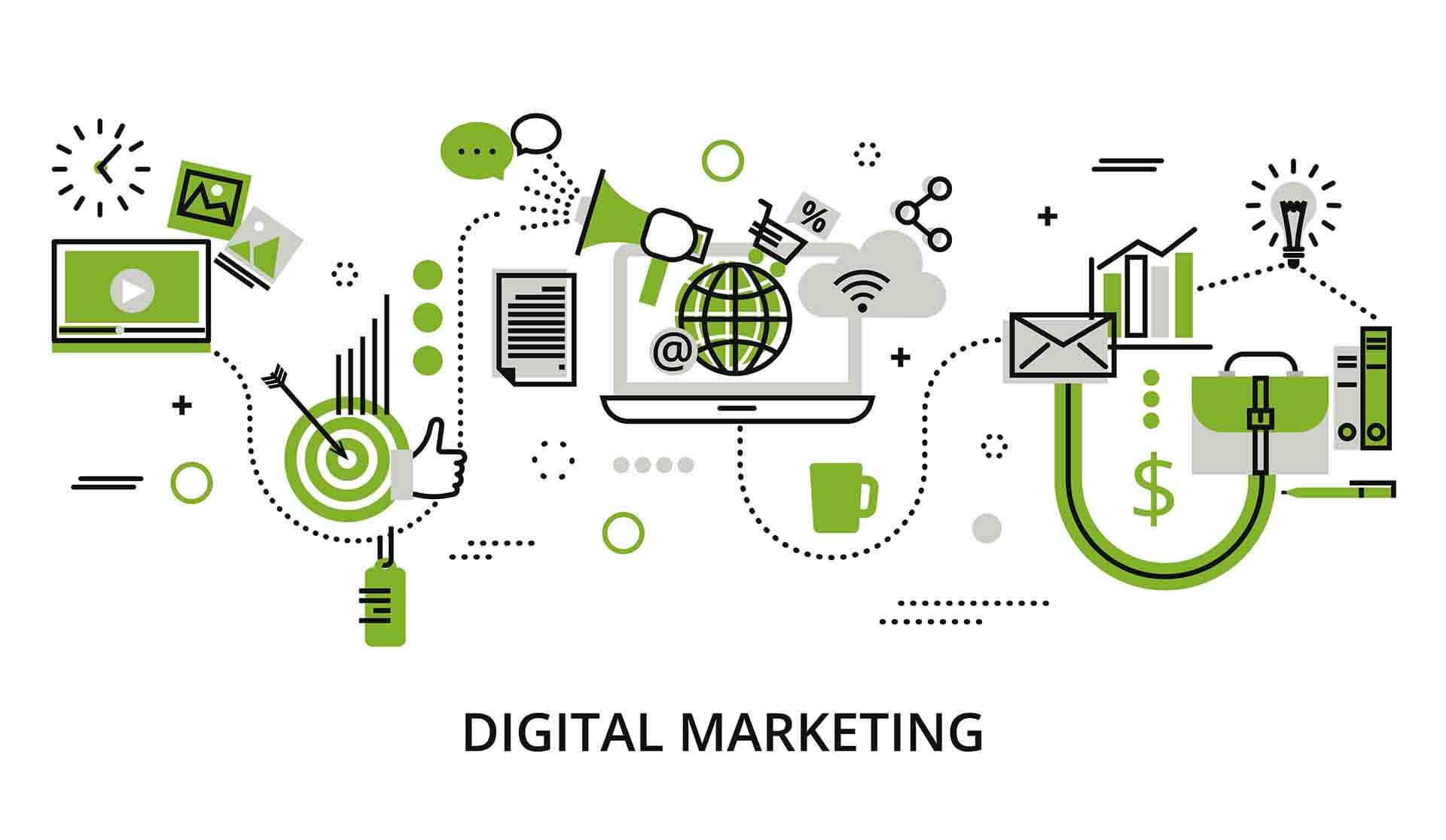Insights
Run and Grow Your Business during Pandemic
20/08/2021
17
Run and Grow Your Business during Pandemic
The global pandemic hits the world of business hard with intermittent lockdown and social distancing.
Over time, many have learned to adapt while a few still harbors a hope that everything will soon be back to normal. In any situation, doing nothing is never the way to sustainable growth, but doing anything doesn’t always fare better.
Let’s learn how to navigate during the global pandemic with key considerations in managing and growing your business.
Run Business during Pandemic: Understand Key External Business Factors
The crisis doesn’t leave out any industry or business, and its impact varies with locations, industry/business nature and scale. Therefore a look at statistics and current trends before making adaptive changes is necessary. Many argue that online-based is the best business type in this pandemic, but it does depend on specific situations. First we will examine 3 main external factors that affect your business during social distancing: 
Business during pandemic
The Changing Customers
It’s no wonder customer behaviors are different in a crisis. But how have they changed? The article about the Overview of Digital Marketing during Pandemic has answered this question. Customers now favor locality as it’s generally safer, more affordable and convenient. Brand discovery via social media becomes a reinforced habit, making companies put more effort in online reputation management.
What’s more important here is these changes may mean new customer segments for your company. For example, older generations have flooded into eCommerce channels since the outbreak, asking for strategic changes from management.
The (New) Preying Competitors
The battlefield was crowded, now it’s overflowing. New competitors are joining because their original business can’t overcome the restriction of social distancing and lockdown. Just think of how some hotels, restaurant chains and beauty spas have switched (temporarily?) to provide essential goods during this time.
Business social distancing
The Disrupted Supply Chain
According to a research of Ernst & Young about the pandemic impact on supply chains, it covers “all automotive and nearly all (97%) industrial products companies”.
The supply chain doesn’t only suffer from lockdown and social distancing but also from the greater imbalance between supply and demand.
And if your company operations are related to factories’, the situation is grimmer with harsher requirements about “physical spacing, contact-tracing and more personal protective equipment (PPE)”.
Another external factor to consider is the influence of your stakeholders on your business. Think about changes in the interests and priorities of your shareholders, investors, vendors, and partners, and take it into account when it comes to decision making.
Run Business during Pandemic: Manage Crucial Internal Energies
After scanning the external situation, it’s time to look inside your company. Some departments will suffer more than others, but it’s wise to leave none out of your examination.
There are 2 key factors:
Processes & Strategies
Some companies, especially giants with a long history, apply a lot of traditional processes. These generally require going to the office, multiple steps (sometimes bottlenecks), more time to process and make changes.
This gives smaller businesses a competitive advantage in crises as they can respond much more quickly. But they can’t compare with giants in terms of resources.
The International Labour Organization (ILO) suggested “restructuring for recovery and resilience” in response to the pandemic.
You can follow ILO’s comprehensive guide to make appropriate restructuring decisions for your business in this time of pandemic. In general, it requires consideration, transparency and due diligence during the process.
Your Valued Employees
Do you know that customers expect brands to “look after their employees first and foremost” during the pandemic? Results from a Kantar report about consumer expectations during pandemic has showed that 78% want businesses to care about their employees’ health, while 62% vote for flexible working conditions.
If your business is online-based or technology-focused, moving to working from home may not be much of a trouble. But it’s another story to the rest. From preparing tools for employees (laptops, access to systems, teleconference accounts, etc.) to managing performance and well-being, you need a structured approach for it to last long. 
Business in pandemic
Grow Business during Pandemic: Make Critical Changes Now
Now that you have a 360 degree view of your business case, it’s time to make appropriate decisions in this time of the pandemic.
“Shift to Digital”
This is not a new trend, but the crisis has made it a must. To go digital, consider the following aspects
Digital marketing
Digital marketing has become the main communication channel between a business and their customers during a pandemic. If you haven’t built a digital marketing foundation pre-pandemic, it’s impossible to focus on all disciplines at the same time.
In such cases, follow the three-step guidance:
Step 1: Study the statistics and trends of online marketing in pandemic.
Step 2: Review your current business and marketing situation, including your goals, progress, resources, budgets, etc.
Step 3: Ask for help from experts. Look for a trusted digital marketing agency that offers multiple all-inclusive services. This isn’t the time for trial and error. And you’ll save a lot of resources by outsourcing the technical task to experts.
Online shopping
This is mainly about developing your eCommerce site and mobile app among other online shopping channels. Also, pay attention to the supply chain if you provide tangible goods.
Appropriate business in this time of pandemic
Omnichannel
Many businesses have started this retail strategy before the pandemic and it’s paying off.
During the pandemic, your business can try to expand commercial channels via online means, delivery and marketplace partners.
Don’t focus only on brand-owned touchpoints, invest in non-owned ones also. The downside is reduced control, but you will increase your reach and exposure. Just remember to keep 3 key channels under your full control: your physical store, website and mobile app.
Working environment
Re-evaluate available positions to put them into the most suitable category: work-from-home, office-only and best-to-outsource. Remember to review performance management processes and metrics to make sure they are aligned with this big change.
Information security is crucial in your move to digital. Don’t try using unregulated sources or platforms for lower costs, as one misstep can cost you the whole business.
Focus on agility
The goal here is to get things done more quickly during the crisis, but not to trade long-term growth for short-term benefits. Here are 3 ways to increase your agility or responsiveness:
Use real-time data. Note that traditional business processes are not always compatible with this upgrade. So if you want to implement this for your business, a long-term plan that also covers actions after the pandemic must be put in place.
Apply Agile Method in marketing (often used in software development). This will help your business to get results in a shorter time, increase efficiency and connect functional teams better.
Outsource. This method is praised for saving costs, boosting productivity and reducing time-to-market. Moreover, Deloitte considers outsourcing post pandemic an appealing solution.
Provide the Customers with the Right (and Likely New) Values
Customer values don’t stay the same in crises. Consider these points to provide your (new) customers with unique values:
Research on how your customers have changed during lockdown. Then review your buyer persona and customer segment to match your values with theirs.
Optimize digital marketing practices to maintain reputation, build positive brand image and engage with current and potential customers.
Managing business during global pandemic
Learn more: The best digital marketing trends for the pandemic based on statistics.
Conclusion
The pandemic has wreaked havoc in communities and businesses. It is crucial for company management to make wise, informed and considerate decisions to keep their business afloat and even thrive during crises. This guide provides an overview picture of key points for business consideration before any action in the pandemic. Try to apply them to your specific situation and think about prospective impact.
No matter which changes you make, “shift to digital” will be one of those as the inevitable business development. In this big move, eCommerce and digital marketing are indispensable to managing and growing business during the global pandemic.
If you’re unsure how to leverage these powerful weapons, On Digitals is proud to be your trusted partner through this bumpy road to your flourishing future.
NEWEST POSTS
- Consumer Confidence Index Vietnam: A Boost in The Thriving Market
- A Closer Look at Vietnam’s Primary Payment Methods
- The Top B2C Digital Marketing Trends in Vietnam to Help You Achieve Your Goals
- SEO company Vietnam: How to elevate your digital marketing efforts
- What are the advantages of doing business in Vietnam?
Read more

